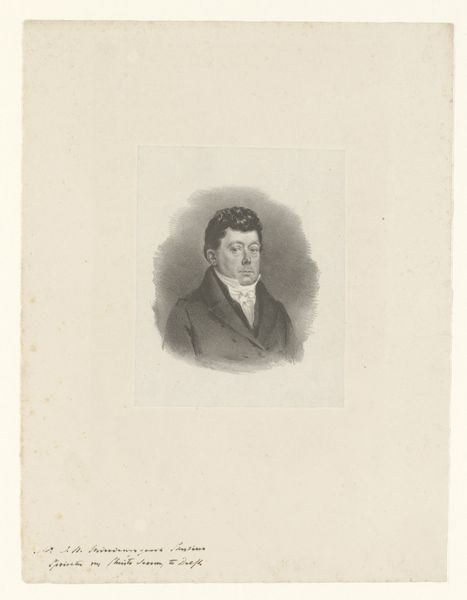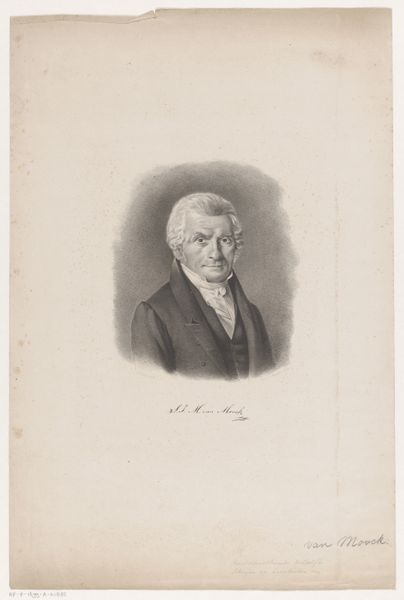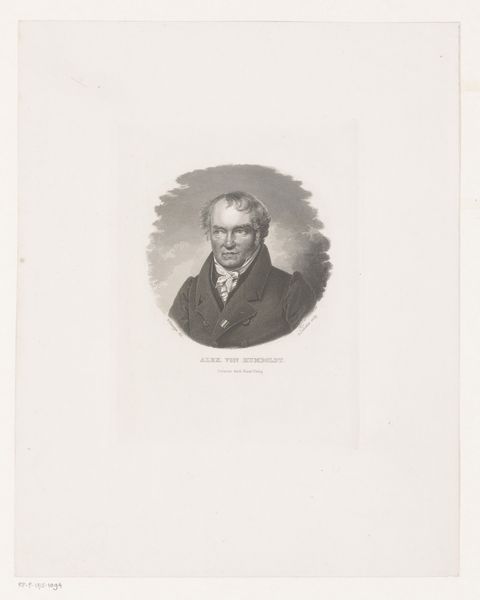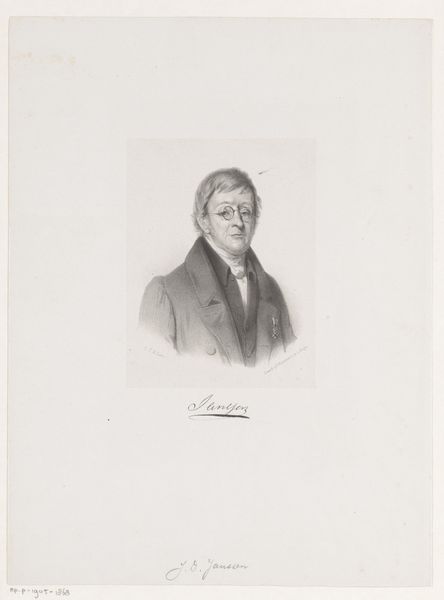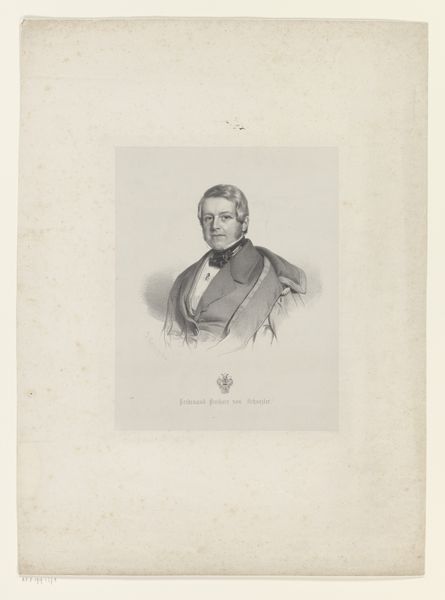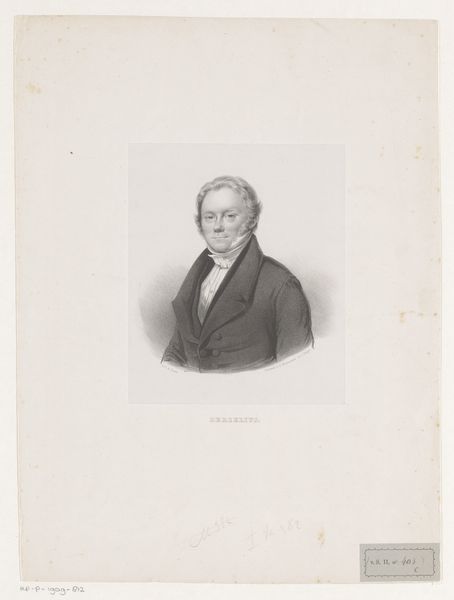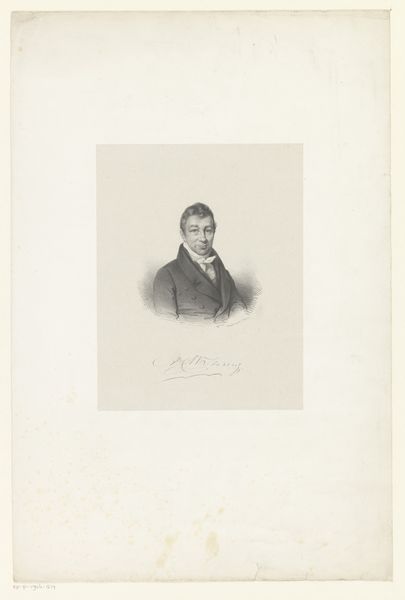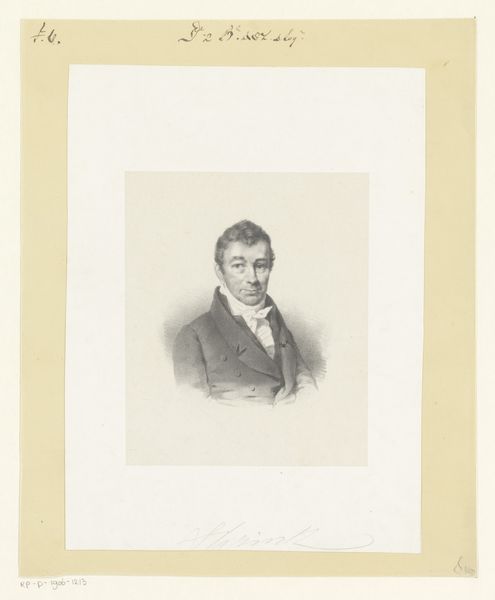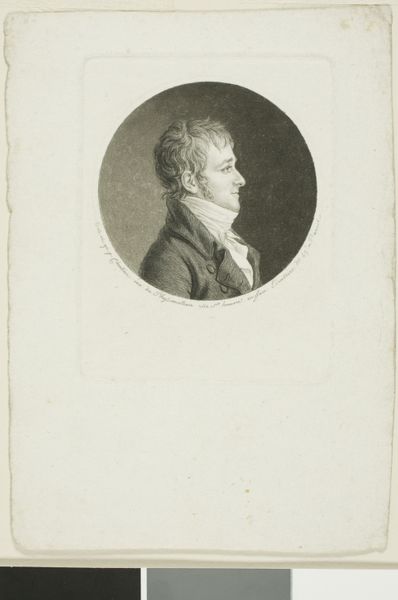
drawing, pencil
#
portrait
#
pencil drawn
#
drawing
#
pencil sketch
#
old engraving style
#
caricature
#
pencil drawing
#
romanticism
#
pencil
#
portrait drawing
Dimensions: height 271 mm, width 207 mm
Copyright: Rijks Museum: Open Domain
Curator: Here we have Jean-Baptiste Madou's "Portret van Willem Philip Barnaart," a pencil drawing created sometime between 1806 and 1877. It resides here at the Rijksmuseum. Editor: It strikes me as a very clean image, almost ghostly in its softness. It has that feel of restrained Romanticism, perhaps tinged with some nascent Realism. The way the subject emerges from the paper is compelling. Curator: Let's consider Willem Philip Barnaart's social positioning in relation to the portrait's style. During this period, portraits often functioned as declarations of status, class and belonging, particularly within bourgeoise circles. What social function could it have served? Was it intended for public display or for private family archives, considering his enlightened milieu? Editor: The starkness and limited detail perhaps point towards a shift from earlier elaborate, symbolic depictions of the aristocracy. What strikes me most is the lack of visual ornamentation around him: that emptiness almost invites you to ponder Barnaart himself. His gaze is so direct. Curator: That's insightful. This period witnessed burgeoning political reformist ideals. His somber affect resonates more widely when placed alongside the Dutch Patriot movement. The subtle details, like his severe hairstyle or minimally adorned attire, indicate this was a moment where masculine identity was becoming more aligned with civic virtue and grounded leadership rather than conspicuous consumption or aristocratic lineage. How does that symbolism intersect? Editor: Exactly, even without overtly heroic symbols, he still embodies stability through restrained simplicity. The muted tones emphasize that sober mood, fitting in an age marked by emerging industrialism and revolutions in social contracts. His self-contained poise speaks volumes about enduring stoicism as an ideal. Curator: Indeed, Madou’s work captured an ethos wherein bourgeois subjects started consciously articulating identity through what might now be understood as a subtle anti-establishment attitude rooted more on humanist ethics than visible signs of wealth or lineage. Editor: The overall impact resides then not only as a representation but a sort of subtle coded communication for the rising social consciousness—almost like an early version of today’s visually understated statements about identity. It leaves you musing far beyond just artistic technicalities, wouldn't you say? Curator: Absolutely, that interweaving narrative is indeed something worthwhile in these drawings!
Comments
No comments
Be the first to comment and join the conversation on the ultimate creative platform.

